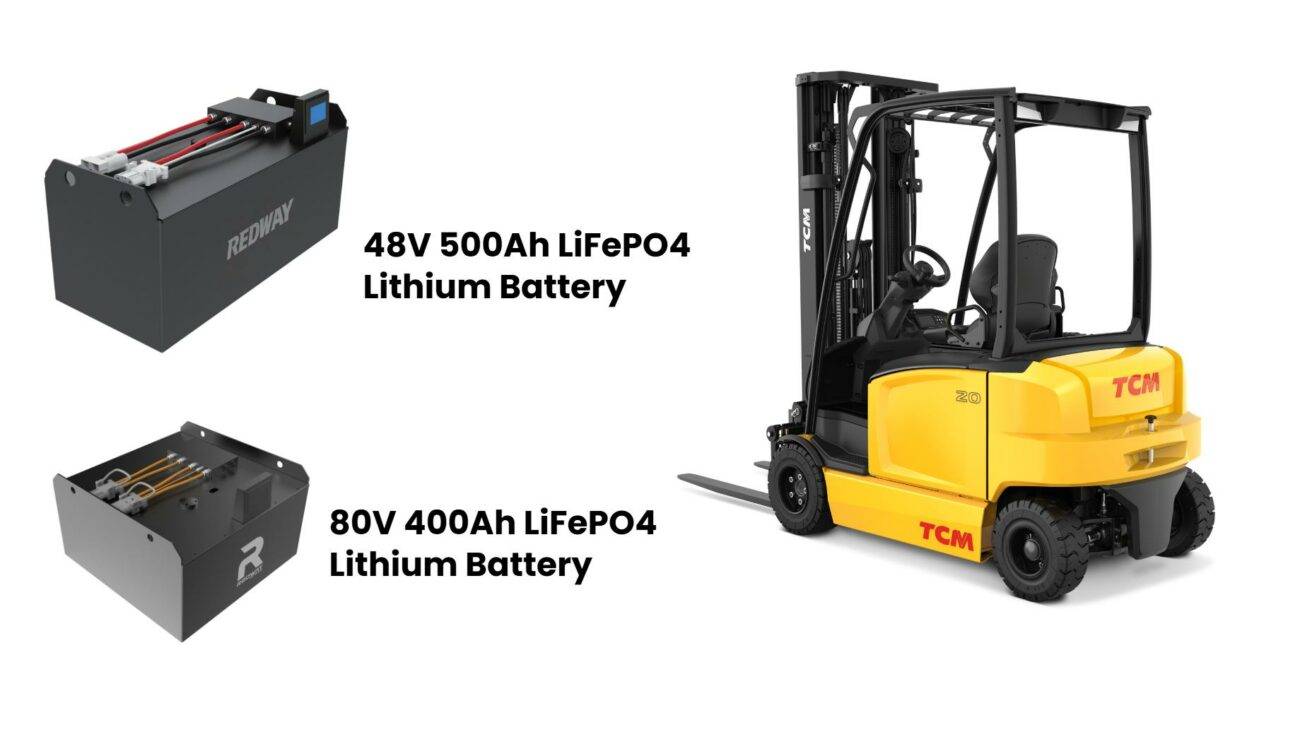- Forklift Lithium Battery
- Golf Cart Lithium Battery
- Rack-mounted Lithium Battery
51.2V 100Ah Rackmount LiFePO4 Battery
8000 times (80% DOD 0.5C)
Optional SNMP for TELECOM - Car Starter Battery
- 12V LiFePO4 Battery
12V 150Ah Lithium RV Battery
Bluetooth App | Self-heating
LiFePO4 | Group 31
UL 1642 | IEC 62619 - 24V LiFePO4 Battery
- 36V LiFePO4 Battery
- 48V LiFePO4 Battery
- 60V LiFePO4 Battery
60V 100Ah Lithium Battery (AGV, AMR, LGV)
Peak Discharge Current 400A
500 x 298 x 349 mm - 72V~96V LiFePO4 Battery
72V 100Ah Lithium Golf Cart Battery
Peak Discharge Current 315A (10S)
740 × 320 × 246 mm - Wall-mounted Lithium Battery
51.2V 100Ah 5kWh
Wall-mounted Battery532 x 425 x 170 mm / LiFePO4
>8000 Cycles (80% DOD 0.5C)
RS485 / CAN-bus
for Solar Home ESS - Home-ESS All-in-One
51.2V 32kWh
All-in-On HESS SystemPowerAll
51.2V / LiFePO4
>8000 Cycles (80% DOD 0.5C)
RS485 / CAN-bus / WiFi
All-in-One for Home ESS
What Factors Influence Wei Lun Forklift Battery Replacement Costs?
Wei Lun forklift battery replacement costs range from $2,500 to $8,000+, depending on battery capacity, voltage, and technology. Lead-acid batteries are cheaper upfront ($2,500–$5,000), while lithium-ion options cost $6,000–$8,000 but offer longer lifespans. Additional factors include labor fees, disposal charges, and regional pricing variations.
LiFePO4 Forklift Batteries Wholesale
How Does Battery Capacity Affect Replacement Costs?
Higher capacity batteries (500–1,500 Ah) cost more due to increased material requirements. For example, a 48V/800Ah Wei Lun lead-acid battery costs ~$4,200, while a 36V/500Ah unit averages $3,100. Lithium-ion models add a 30–50% premium but provide 3× more cycles, reducing long-term replacement frequency.
Battery capacity directly correlates with energy density and plate thickness. Industrial operations requiring 10+ hours of daily runtime should prioritize 1,000Ah+ batteries despite higher initial costs. For warehouses with scheduled charging breaks, mid-capacity (600–800Ah) batteries often deliver optimal balance. Temperature also affects capacity – lead-acid batteries lose 15% efficiency at 0°C, while lithium-ion maintains 95% performance from -20°C to 60°C.
| Capacity (Ah) | Lead-Acid Cost | Lithium-Ion Cost | Cycle Life |
|---|---|---|---|
| 500 | $3,100 | $4,650 | 1,500 vs. 4,500 |
| 800 | $4,200 | $6,300 | 1,200 vs. 3,800 |
| 1,200 | $5,800 | $8,700 | 1,000 vs. 3,200 |
Why Choose Lithium-Ion Over Lead-Acid for Wei Lun Forklifts?
Lithium-ion batteries offer faster charging (1–2 hours vs. 8–10 hours for lead-acid), 80% energy efficiency (vs. 50–60%), and zero maintenance. While initial costs are 60% higher, their 10-year lifespan versus 5–7 years for lead-acid results in 40% lower lifetime costs. Ideal for multi-shift operations.
Lithium Forklift Batteries Factory
The modular design of lithium-ion batteries allows partial replacement of individual cells, reducing long-term maintenance costs. They also feature built-in Battery Management Systems (BMS) that prevent overcharging and optimize performance. Unlike lead-acid batteries requiring specific charge cycles, lithium-ion units support opportunity charging during breaks without memory effect. Recent advancements include smart connectivity features enabling real-time monitoring of State of Charge (SOC) and predictive maintenance alerts through IoT integration.
Where Are Wei Lun Batteries Manufactured?
Wei Lun batteries are produced in ISO-certified facilities in Guangdong, China, using robotic assembly lines. Regional manufacturing hubs in the U.S. (Texas) and EU (Poland) handle localized adaptations. All batteries undergo 23-point quality checks, including thermal stress tests and capacity validation under DIN 43534 standards.
When Should You Replace a Wei Lun Forklift Battery?
Replace Wei Lun batteries when capacity drops below 80% of rated Ah (typically after 1,500 cycles for lead-acid or 4,000 cycles for lithium-ion). Warning signs include voltage drops >10% under load, swollen cases, or electrolyte stratification. Use battery monitoring systems for predictive maintenance.
Does Battery Chemistry Impact Operational Efficiency?
Lead-acid batteries lose 0.5–1% capacity daily through self-discharge versus 0.1–0.3% for lithium-ion. Lithium models maintain stable voltage until 90% discharge, whereas lead-acid drops 20% after 50% discharge. This translates to 15% longer runtime per charge for lithium-ion units.
Are Refurbished Wei Lun Batteries Cost-Effective?
Refurbished Wei Lun batteries cost 40–60% less than new units ($1,500–$3,500) but carry risks: 30% fail within 18 months versus 5% for new batteries. Only consider refurbished options with OEM-replaced plates and updated BMS firmware. Warranty terms drop from 5 years (new) to 1–2 years (refurbished).
How to Calculate Total Ownership Costs?
To calculate total ownership costs, add the initial purchase price, operating expenses like energy usage, and ongoing maintenance costs. Include expected lifespan in cycles, labor for servicing, and costs from downtime or replacement. Consider disposal or recycling fees at end-of-life. Divide the total by estimated service life to find cost per use. This method gives a complete view of long-term investment, helping you compare options and choose the most cost-effective battery solution.
Use this formula:
Total Cost = (Initial Price + (Replacement Frequency × Disposal Costs)) / Operational Years
| Battery Type | Initial Cost | Disposal Fee | Annual Cost |
|---|---|---|---|
| Lithium-ion | $7,000 | $0 | $700/year |
| Lead-Acid | $4,000 | $1,200 | $742/year |
Expert Views
“Redway’s analysis shows lithium-ion ROI breakeven occurs at 1,200 annual operating hours. Below this threshold, lead-acid remains viable. Above 2,000 hours, lithium-ion’s 30% energy savings and reduced downtime justify the premium. Always cross-reference battery specs against ANSI B56.1 load requirements.”
— Redway Power Solutions Engineer
Conclusion
Wei Lun battery replacement costs require holistic analysis of chemistry, duty cycles, and regional factors. While lithium-ion dominates high-utilization scenarios, lead-acid retains niche viability. Always validate supplier certifications (UL 2580 for lithium, IEC 61427 for lead-acid) and negotiate service contracts covering thermal management system audits.
FAQ
- Can I retrofit older Wei Lun forklifts with lithium batteries?
- Yes, but requires BMS compatibility checks and possible contactor upgrades ($300–$800).
- How long do Wei Lun batteries take to charge?
- Lead-acid: 8–10 hours (opportunity charging not recommended). Lithium-ion: 1–2 hours (supports partial charges).
- What warranty comes with Wei Lun batteries?
- 2-year full warranty on lead-acid, 5-year pro-rated on lithium-ion (covers 70% capacity retention).




















